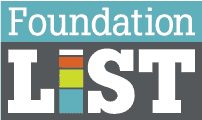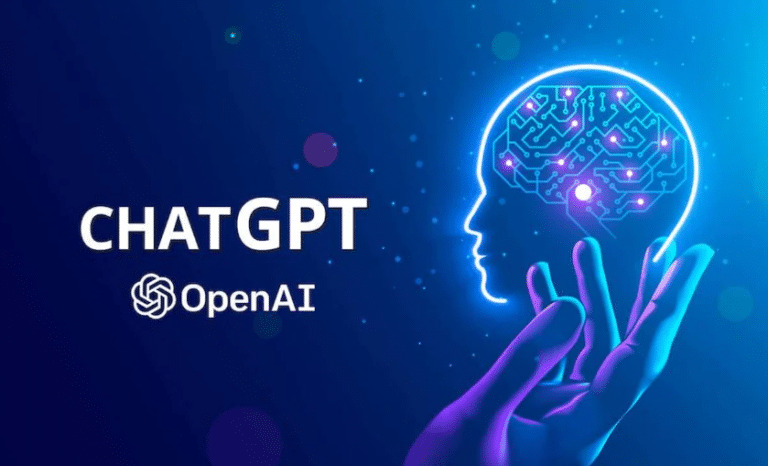Have you heard of ChatGPT, the cutting-edge technology that is revolutionizing the way we interact with the internet? Perhaps you’ve wondered what all the fuss is about and why everyone is talking about it. As the latest breakthrough in AI, ChatGPT has the potential to change how we search, communicate, and engage with online content. With its ability to generate human-like responses to queries, ChatGPT is rapidly becoming the future of surfing the internet. In this article, we will explore what ChatGPT is, how it works, and why it is poised to revolutionize the online experience.
Recruiting is a critical aspect of any organization’s success, and businesses are constantly looking for ways to streamline their hiring process. With the rapid evolution of technology, artificial intelligence (AI) has become a popular tool for recruiters. Generative AI, in particular, has emerged as a promising technology for recruiting, thanks to its ability to generate natural language responses. In this article, we will explore how you can effectively utilize ChatGPT, a large language model, in your hiring process.
ChatGPT is an incredibly powerful tool for recruiters, providing many benefits in terms of time and resource-saving. By following the tips mentioned in this blog, recruiters can ensure that they get the most out of ChatGPT while maintaining accuracy and effectiveness. By integrating ChatGPT into the recruitment process, companies can hire more efficiently and effectively, saving time and resources in the long run.
What is Generative AI, and How Does It Work?
Generative AI is a type of AI that uses deep learning algorithms to generate data that is similar to the data it was trained on. It works by training an AI model on a large dataset of text, images, or other data types. Once trained, the model can generate new data based on the patterns it learned from the training dataset. In the case of natural language, generative AI models like ChatGPT can understand language patterns, syntax, and semantics to generate human-like responses to queries.
How to Talk to ChatGPT So That It Gives Usable Results
ChatGPT is a powerful tool for recruiters, but it requires specific approaches to generate accurate results. Here are some tips to help you get the most out of ChatGPT:
- Provide clear and concise questions: ChatGPT works best when it receives clear, concise questions. Avoid using overly complex language, and try to stick to simple and straightforward phrasing.
- Be specific: ChatGPT is more likely to give accurate results when you provide specific details about the job, skills required, or candidate’s qualifications.
- Don’t expect perfection: While ChatGPT is incredibly advanced, it’s not perfect. Be prepared for occasional errors or misunderstandings, and be ready to clarify questions or provide additional context if needed.
Basic Use Cases in Recruiting
ChatGPT can be used in various ways to streamline the recruiting process. Here are some basic use cases:
- Candidate Screening: ChatGPT can help recruiters to screen candidates by generating interview questions, analyzing resumes, and evaluating job applications.
- Candidate Engagement: ChatGPT can assist recruiters in maintaining communication with candidates and answering their questions about the job and the hiring process.
- Job Description Creation: ChatGPT can help to generate job descriptions by analyzing the requirements of a position and generating a description that reflects the job’s responsibilities and qualifications.
Real-life Examples of Successful ChatGPT Use in Hiring
Several companies have successfully used ChatGPT in their hiring process. Here are some examples:
- Intel: Intel used ChatGPT to create personalized job descriptions for candidates. The AI model generated job descriptions based on the candidate’s resume, skills, and preferences.
- Mya Systems: Mya Systems used ChatGPT to create an AI-powered virtual assistant that can answer candidate’s questions about job postings and the hiring process.
- Pymetrics: Pymetrics used ChatGPT to create an AI-powered job matching system that matches job seekers with suitable job postings based on their qualifications and preferences.
ChatGPT Is Also A Tool For Job Seekers
With its ability to generate natural language responses and analyze data, ChatGPT can provide valuable insights and assistance to job seekers in their pursuit of finding a job. Here are several ways in which ChatGPT can be utilized to find a job, including:
- Resume analysis: ChatGPT can analyze your resume and provide feedback on how to optimize it for better results. It can help identify the skills and experience that employers are looking for and provide suggestions for how to showcase your qualifications.
- Job matching: ChatGPT can assist in finding suitable job postings by analyzing your qualifications and preferences. It can help match you with job postings that align with your skills and interests.
- Interview preparation: ChatGPT can generate interview questions based on the job requirements and provide you with practice questions to help you prepare for the interview. It can also provide feedback on your responses and suggest improvements.
- Company research: ChatGPT can help you research companies and learn more about their culture, values, and mission. It can provide insights into the company’s reputation, growth opportunities, and employee satisfaction levels.
- Networking: ChatGPT can help you identify potential connections and provide guidance on how to reach out to them. It can provide suggestions for what to say and how to follow up.
About ChatGPT and Its History
ChatGPT was created by OpenAI, a research laboratory dedicated to creating artificial intelligence in a safe and beneficial way. OpenAI was founded in 2015 by a group of tech leaders, including Elon Musk, Sam Altman, Greg Brockman, Ilya Sutskever, and Wojciech Zaremba, among others. The organization aims to develop cutting-edge AI technology and ensure that it is used for the betterment of society. ChatGPT is a product of OpenAI’s research into generative AI. “GPT” stands for “Generative Pre-trained Transformer,” which is a type of machine learning model that uses natural language processing to generate human-like responses to text-based queries. The “transformer” refers to the architecture of the model, which utilizes a self-attention mechanism to analyze and process input data. The GPT series of models has been a significant breakthrough in the field of AI and has applications in a wide range of industries, including language translation, chatbots, and content creation.
ChatGPT’s Usage and Growth
As ChatGPT continues to gain popularity, its user base and search volume have been steadily increasing. While exact figures are not publicly available, OpenAI has reported that millions of users have engaged with ChatGPT since its launch. Additionally, several large companies and organizations have implemented ChatGPT into their operations, including Microsoft, IBM, and the World Health Organization. As more individuals and businesses begin to recognize the potential of ChatGPT, its user base and search volume are expected to continue growing. Furthermore, OpenAI is continually developing and improving the platform, making it more accessible and user-friendly. With its ability to generate natural language responses and analyze data, ChatGPT has the potential to revolutionize the way we interact with the internet and could become a ubiquitous tool for communication, problem-solving, and information retrieval.
Other Technology Being Developed By Google
Google has also developed its version of ChatGPT, called the Google AI Language Model for Dialogue Applications (LaMDA). Like ChatGPT, LaMDA is a conversational AI model that can generate human-like responses to text-based queries. However, there are several key differences between the two models. LaMDA is designed specifically for dialogue applications, such as chatbots and voice assistants, whereas ChatGPT is more versatile and can be used for a wide range of tasks, including content creation and language translation. LaMDA is also more focused on providing contextually relevant responses to user queries, using a knowledge graph to understand the relationships between different concepts and ideas. In contrast, ChatGPT is more focused on generating natural language responses based on the input text it receives. Another significant difference between the two models is that LaMDA is not publicly available yet and is only being used internally by Google. In contrast, ChatGPT is available to the public and can be accessed through OpenAI’s website. Despite these differences, both ChatGPT and LaMDA represent significant breakthroughs in the field of conversational AI and have the potential to transform the way we interact with technology.
BARD, or the Berkeley Auto-encoder Representations for Dialogue, is a conversational AI model developed by researchers at UC Berkeley/Google. BARD is designed to be more flexible and adaptable than other conversational AI models. It uses a neural network to encode the user’s input and decode an appropriate response, allowing it to handle a wide range of conversational topics. BARD is also capable of generating creative responses and can be trained to use humor and sarcasm in its replies.
LaMDA, or the Google AI Language Model for Dialogue Applications, is designed to provide contextually relevant responses to user queries. It uses a knowledge graph to understand the relationships between different concepts and ideas, allowing it to provide more accurate and informative responses. LaMDA is also designed to be more conversational and can understand nuances in language, such as idioms and colloquialisms.
In summary, LaMDA is designed to provide contextually relevant responses and is more conversational, while BARD is more flexible and capable of generating creative responses. Both models represent significant advancements in the field of conversational AI and have the potential to revolutionize the way we interact with technology.
How To Sign Up For ChatGPT
Signing up for ChatGPT is a straightforward process that can be completed in a matter of minutes. As ChatGPT is a product of OpenAI, you can sign up for it through their website. First, go to the OpenAI website and click on the “Sign Up” button. You will then be prompted to enter your email address and set a password. Once you have entered your details, click on “Create Account,” and you will receive an email to verify your account. After you have verified your email, you can log in to your ChatGPT account and start using the platform. While there are no fees to sign up for ChatGPT, some features may require a subscription plan. However, the free version is still very powerful and can be used for a variety of purposes.
How To Sign Up For Bard
Bard is designed to boost productivity, accelerate ideas and fuel your curiosity. For more information visit https://bard.google.com.
LaMDA Is Not Publicly Available Yet
Currently, LaMDA is not publicly available for sign-up or use outside of Google’s internal operations. Google has not yet announced when or if they will release LaMDA for public use. However, Google has stated that they plan to incorporate LaMDA into their various products and services, such as Google Assistant and Google Search, in the future.
In the meantime, interested individuals can stay updated on LaMDA’s development and potential public release by following Google’s announcements and updates on their AI and machine learning research. Additionally, there are many other conversational AI tools and platforms available for public use, such as ChatGPT, which can provide similar capabilities to LaMDA for generating natural language responses and engaging in text-based dialogue.


